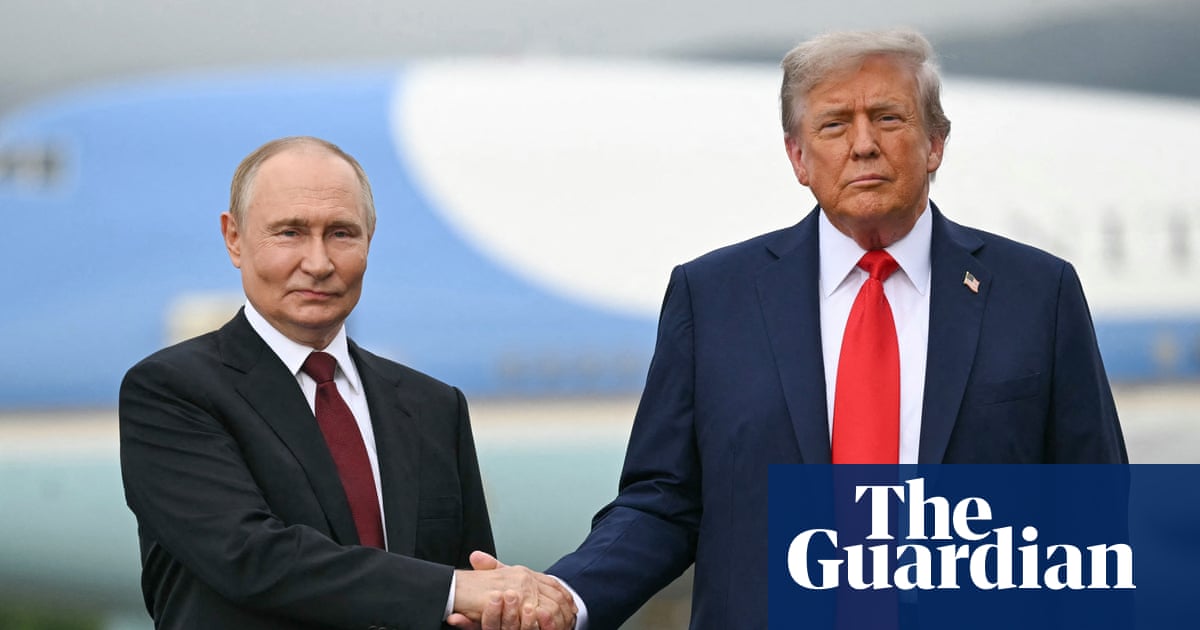For six months Donald Trump has been calling for a ceasefire in Ukraine. His position abruptly changed after his summit last week with Vladimir Putin in Alaska. The US now supports a final settlement of the war first, which is Russia’s negotiating position. What changed? And where does Trump’s latest flip-flop leave prospects for an end to the fighting?
How did Trump’s view on a ceasefire in Ukraine change?
Since spring the White House has been urging Russia to accept a ceasefire in Ukraine. As Donald Trump put it in March: “I think the ceasefire is very important. If we can get Russia to do it, that’ll be great.” The US president threatened to impose sanctions on Moscow, and on buyers of its oil such as India, if it refused. He gave various deadlines, which came and went. Until last week the US continued its demand for a 30-day pause in the fighting, to which Kyiv agreed. Speaking on his plane to Alaska on Friday, before a meeting with Putin, Trump repeated his demand. There would be “severe consequences” if a ceasefire didn’t happen. “I’m not going to be happy,” he said.
The US president’s position dramatically shifted after meeting Putin. Exactly why is uncertain. But in the face of Russian opposition, Trump dropped his call for a ceasefire and instead embraced the Kremlin’s preferred “plan” to end the war. This envisages a comprehensive peace settlement first. Until that happens, Moscow will carry on bombing. Trump also agreed to Russia’s territorial claims. Putin wants Ukraine to cede the northern part of Donetsk oblast – including the fortress cities of Kramatorsk and Sloviansk – which Russian troops have been unable to conquer since 2014. By way of a so-called concession, Russia reportedly said it would freeze the frontlines in southern Zaporizhzhia and Kherson provinces.
The change in US policy on a Ukraine ceasefire was the summit’s most significant outcome. It amounts to a major concession to the Russians. In his meeting on Monday with Volodymyr Zelenskyy in the Oval Office, Trump explained his new way of thinking. He said there was no need for a truce and claimed he had ended six conflicts without one. “I didn’t do any ceasefire,” he said. He said he would still “like them [the Russians] to stop” but said a pause in hostilities might disadvantage “one side or the other”.
MapWhat is the Russian position?
Russia wants to continue its war. Over the summer Russian troops have seized villages in the Donbas, and have entered the Dnipropetrovsk region – which borders Donetsk oblast – for the first time. Russia’s progress is gradual and achieved with heavy casualties. Putin believes he is winning and that time is on his side. His maximalist demands are unchanged since the 2022 invasion. He wants Zelenskyy removed, severe limits put on the size of Ukraine’s army, and a veto on its Nato membership. Any ceasefire would in effect divide territory along the existing 1,000km frontline. A permanent peace plan, by contrast, could involve one side giving land to the other as part of a deal. Putin’s conditions are unacceptable to Kyiv, and amount to Ukraine’s surrender. Ukrainians believe he is using Trump to take what Russian forces have been unable to capture on the battlefield – with DC the quickest route to victory in Donetsk. When negotiations fail – the most likely outcome in the short term – Putin will inevitably blame Zelenskyy.
Where does this leave Ukraine and its allies?
Frustrated. European leaders have urged Trump to put pressure on Russia to agree a ceasefire before any negotiations take place. On Monday, they reinforced this message in the White House. Britain’s Keir Starmer joined Zelenskyy in Washington, with the leaders of France, Germany, Italy and Finland, Nato and the EU. Their task was to protect Zelenskyy – in the end his meeting with Trump went better than the last encounter in February – and to tactfully convey Ukraine and Europe’s principled anti-landgrab position. The Europeans are opposed to any deal that would reward Russian aggression. Germany’s chancellor, Friedrich Merz, expressed his support for a ceasefire. “Let’s work on that and let’s try to put pressure on Russia,” the German leader told Trump. France’s president, Emmanuel Macron, said European governments would eventually need to be included in any peace talks. After Trump’s unexplained U-turn, Ukraine’s EU allies are using a new formula to try to win him over to the idea of a ceasefire – “stop the killing”.
What does history tell us?
Wars can stop without formal peace treaties. In 1953 an armistice ended the war between North and South Korea. It established a demilitarised zone between the two states, the DMZ, dividing the peninsula. Military commanders from the US, China and North Korea signed the deal. South Korea’s leader refused, because it left Korea split. Technically, the two Koreas are still in a state of war. The ceasefire, though, has lasted more than eight decades, despite breeches by Pyongyang. This model could work in Ukraine. No Ukrainian government is likely to accept Russian occupation over parts of its territory. But it might be prepared to acknowledge the Kremlin’s de facto control as part of temporary settlement. Putin, however, is against the idea of a Korea-style armistice. His goal is to subjugate Ukraine – all of it, or as much as he can get – and to fold it into a reinvigorated greater Russia.
